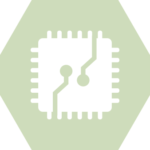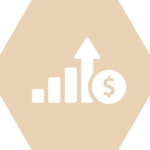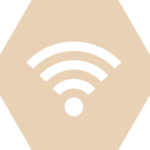
IoT solutions encompass a long list of diverse technologies, including hardware, software, cloud, security, mobile applications, and big-data analytics. To create a platform, manufacturers need to master all these IoT technologies—and, navigate among their complex interactions.
***
Despite the complexities of the Internet of Things, some manufacturers believe they can save money by building their own IoT platforms instead of buying one.
Before your company attempts to build an IoT platform, I caution you to consider these 12 reasons why the penny-wise approach could backfire.
1. You’ll Need Expertise in All Things IoT
 Unless you’ve already launched successful connected products, it’s unlikely that you have all the technical expertise in-house to create a high-quality IoT product, especially at scale.
Unless you’ve already launched successful connected products, it’s unlikely that you have all the technical expertise in-house to create a high-quality IoT product, especially at scale.
Besides the expertise in obvious areas such as embedded device hardware and firmware, networking and communications, cloud computing, and mobile application development, you’ll also need proficiency in the latest data security and privacy processes, integration with other IoT products and services, data storage architectures, performance tuning, reliability testing, over-the-air (OTA) updates, mobile app user experience best practice, and so on.
What’s more, you’ll need to be very clear on the difference between an IoT infrastructure-as-a-service (IaaS) and a platform-as-a-service (PaaS) offering. IoT IaaS providers such as Amazon Web Services (AWS), Microsoft Azure, or Alibaba provide the cloud infrastructure necessary to support your IoT solutions. For a monthly fee, IaaS solutions let you access, monitor, and manage remote datacenter infrastructures for your IoT compute, storage, and networking services.
But plenty of IoT responsibility still lands on your doorstep. If you work directly with IaaS providers, you’re responsible for building and managing your IoT applications on top of the cloud infrastructure. You’ll be writing and updating your own custom code, as well as maintaining your infrastructure over time.
2. You’ll Have to Ramp up Your Engineering Teams—a Lot
 Maybe you think your existing hardware and software engineering teams can handle IoT development, perhaps with a few additions here and there.
Maybe you think your existing hardware and software engineering teams can handle IoT development, perhaps with a few additions here and there.
But think about this: to provide a basic level of IoT functionality, a relatively small company will need more than a dozen dedicated, full-time engineers—across device hardware and software, cloud, mobile app, DevOps, security, storage, and support functions—plus perhaps 10 man-years of engineering effort to develop an IoT product. Add another dozen or so dedicated engineers and a few more man-years of engineering effort for quality assurance.
For larger enterprises, headcount needs could easily reach 50 engineers, and more. Global enterprises should plan on at least 50 to 100 dedicated IoT engineers.
Here’s another hard truth: even adding engineering staff will mean you can produce only minimal IoT functionality. That minimum level of engineering headcount won’t allow you to include a number of things that end customers expect from connected products, such as power optimization, scalability, OTA updates, interoperability with other IoT products, integrations with IoT services or voice-control systems, or enterprise requirements for global support.
To include those advanced IoT features, plan on doubling your project’s dedicated engineers and man-years.
Let’s say you do have a large enough engineering staff to cover these numbers. But if you reassign existing engineering staff to perform all the functions needed for the IoT, who will take care of the crucial functions that those engineers are performing today?
3. It’ll Cost Way More Than You Think it Will
 If your engineering staff works in the United States, plan on $160,000 and up—often way up—for the average annual cost per engineer. Multiply that amount by the number of dedicated engineers and engineering man-years, and your staffing costs quickly reach many millions of dollars a year.
If your engineering staff works in the United States, plan on $160,000 and up—often way up—for the average annual cost per engineer. Multiply that amount by the number of dedicated engineers and engineering man-years, and your staffing costs quickly reach many millions of dollars a year.
In addition to personnel costs, building your own IoT platform will entail hardware costs, such as for RF modules and host microcontrollers. Plus, you’ll need to pay cloud infrastructure costs, including application and database instances.
Make sure to budget for testing—which is extensive and complicated given all the interconnections to make IoT solutions work—as well as the costs of scaling, updating, and supporting your IoT products through their entire lifecycle. Finally, factor in additional sales and marketing costs, especially if you expand into new markets or distribution channels.
4. It’ll Take Way Longer Than You Might Imagine
 How long does it take to get an IoT product to market? In part, the answer depends on how many engineers you can assign to IoT development.
How long does it take to get an IoT product to market? In part, the answer depends on how many engineers you can assign to IoT development.
Still, there are limits to how much time you can save by throwing lots of resources into IoT product development if you’re trying to build your own IoT platform. That’s because the multiple levels of interconnections impose a steep learning curve. No matter how smart or skilled your engineering staff might be, unless they’ve already built an IoT platform together, it will take time to get it right.
The other time sink you’ll encounter is testing. If you were to begin with a ready-made IoT platform, you’d still need to spend three to six months, or more, testing all the aspects of your IoT solution. The testing required to build the platform in the first place will add many more months.
5. You’ll Encounter Entirely New Risks
 As a manufacturer, you are an expert in the markets in which you compete, and you probably can anticipate the kinds of risks you’ll encounter in these familiar environments.
As a manufacturer, you are an expert in the markets in which you compete, and you probably can anticipate the kinds of risks you’ll encounter in these familiar environments.
Realistically, you’re unlikely to have similar insight once you enter the world of connected products. Potential IoT risks you’ll need to consider include:
- This is the biggie. The whole point of the IoT is connectivity, but with connectivity comes the need to protect your connected devices, as well as the IoT data they generate, from hackers and malware of all kinds.
- Data privacy. Your end customers depend on your ability to protect their private data from unauthorized use. That’s a huge responsibility, and it’s not a straightforward pursuit.
- End-user expectations. People are becoming increasingly savvy about digital products of all kinds. Consumers using IoT products expect things like ease of use, instant responsiveness, and integration with other smart products and services. No one will put up with a poor user experience from any aspect of your IoT solutions.
- Things that work fine for the first dozen or hundred or few thousand IoT products might fall apart as you scale to tens of thousands or millions of units.
- One of the main differences between IoT and traditional products is that IoT products can be continually enhanced and upgraded after they’re installed. Your customers will expect you to be able to improve your connected products over time, possibly even to add new features.
- Service and support. It’s one thing to fix a traditional product that breaks down or fails after it’s installed, whether it’s a refrigerator, a coffee maker, or a baby monitor. But are you prepared to assume the responsibility of also managing, servicing, and supporting cloud-based IoT products?
- Brand reputation. Any mistake involving your IoT product—a lapse in network security, a problem that appears as you scale your IoT product, a delay in responsiveness when a user turns on a connected lighting system, inability to properly handle IoT-related support issues—will reflect poorly on your brand. Some mistakes, such as a serious security breach, could be catastrophic.
6. You’ll Need to Get Really Smart About Security and Data Privacy
 We’ve already mentioned the challenges and risks involved in securing your IoT products and their IoT data, but this is such an important area that it warrants its own hard truth.
We’ve already mentioned the challenges and risks involved in securing your IoT products and their IoT data, but this is such an important area that it warrants its own hard truth.
IoT security and data privacy are really difficult for even the most experienced security and cybersecurity experts, and there’s simply no margin for error. If you insist on building your own IoT platform, you’ll need to make sure that your in-house security team is world-class.
Remember, too, that IoT security is never “done”; it’s a constant battle to stay one step ahead of threats. You’ll need to stay on top of all the latest security technologies, and you’ll need to keep your installed IoT products up-to-date with ever-changing standards.
In addition, if you make a product involved in security itself—such as a door lock, home or commercial security system, or smoke alarm system—adding IoT connectivity multiplies the potential risks you’ll face if you don’t design and execute your connected product flawlessly.
7. You’ll Be Tempted to Pack in the Product Features
 You know that ideal IoT product design you’ve labored over and perfected? Resist the temptation to bring that ideal product to market, especially for your initial connected product. Trying to do that will almost certainly blow your projected budget and/or schedule, and it risks making a lousy first impression on your future customers.
You know that ideal IoT product design you’ve labored over and perfected? Resist the temptation to bring that ideal product to market, especially for your initial connected product. Trying to do that will almost certainly blow your projected budget and/or schedule, and it risks making a lousy first impression on your future customers.
That’s where the expertise of a dedicated, experienced IoT platform provider—and the capabilities of flexible IoT platform—can help you diminish the risks of being too ambitious.
Accept that you’ll have to make some tradeoffs. For your first IoT effort, aim for a solid “minimum viable product.” Then, take advantage of the real-world IoT data you collect from your first installed products to iterate and improve your subsequent releases.
8. You’ll Face New Kinds of Competition
 IoT connectivity forces you to rethink how you define a product (hint: a connected product might act more like a service than a traditional static product) or a particular market category. For example, a connected lighting system not only performs its traditional role of illumination, but also can be part of a home security system, entertainment system, or comfort and mood system.
IoT connectivity forces you to rethink how you define a product (hint: a connected product might act more like a service than a traditional static product) or a particular market category. For example, a connected lighting system not only performs its traditional role of illumination, but also can be part of a home security system, entertainment system, or comfort and mood system.
As a manufacturer, you’ll have to rethink your competitive stance. Your connected product will be compared with other connected products of the same type, but also with traditional versions of the product and possibly with adjacent or complementary products that now interact with yours due to IoT connectivity.
An experienced IoT platform provider can help lessen the risk. Gaining access to a robust ecosystem of third-party applications and connected devices can enable you to make the most of your connectivity and to differentiate your connected products.
9. You’ll Need a New Approach to Customer Support
 Let’s say you manufacture kitchen appliances. In the past, your customer support department probably handled things like faulty stovetop burners, broken refrigerators, or dishwashers that needed hoses replaced.
Let’s say you manufacture kitchen appliances. In the past, your customer support department probably handled things like faulty stovetop burners, broken refrigerators, or dishwashers that needed hoses replaced.
As a manufacturer of connected kitchen appliances, your customer support issues now might include problems accessing the Wi-Fi network, questions about data privacy, glitches in the mobile app used to control the appliances, or problems following an OTA update of a product’s firmware. Is your customer support staff ready and able to field such diverse questions?
Plus, are you prepared to engage more frequently with your customers and for a longer period of time? In the past, you might have had little interaction with customers once your product left your facility. With connected products, however, you can expect an entirely different relationship with your customers.
A proven IoT platform provider can be enormously helpful by providing both experience and integration services that better enable your customer support agents, systems, and processes to support your IoT business.
10. You’ll Need to Plan Differently for Your Products’ Futures
 With traditional products, your role as a manufacturer essentially ended when you shipped the product. There was no such thing as planning for your products’ future. But connected products are not static; they can be updated and enhanced over time.
With traditional products, your role as a manufacturer essentially ended when you shipped the product. There was no such thing as planning for your products’ future. But connected products are not static; they can be updated and enhanced over time.
Additionally, you have the opportunity with IoT products to use the data they generate to gain insights into customer behavior and preferences—and to market services or additional functionality to generate new revenue streams.
In many ways, your role as manufacturer shifts from product provider to something more like a service provider. Maybe you offer subscriptions for consumable replacements such as HVAC filters or water softening agents. Maybe you sell integrated value-added services such as energy management, weather-based control of IoT irrigation systems, or personalized feedback to improve usage of anything from toothbrushes to mattresses.
In any case, you’ll need to think carefully about the changes and enhancements you might need to make to your IoT products from the moment they’re installed to the end of their useful life. Choose an IoT platform provider with the experience and robust tools needed to help you navigate your entire IoT products’ lifecycle.
11. You’ll Need Patience To Achieve ROI
 The potential return on investment (ROI) for IoT products is substantial, based mostly on analyzing and using the IoT data that connected devices generate. There are three main categories for ROI for connected products:
The potential return on investment (ROI) for IoT products is substantial, based mostly on analyzing and using the IoT data that connected devices generate. There are three main categories for ROI for connected products:
- Cost optimization and savings, such as reducing bill-of-materials (BOM) or service costs
- Increased revenue and business transformation, such as replacing consumables or offering premium warranty and other value-added services
- Brand development, such as strengthening consumer relationships or using consumer feedback and behavior to improve future products
But it can take time for your IoT investments to begin reaping benefits. In addition to patience, achieving strong ROI for your IoT products will require:
- A clear idea of the use cases for each of your connected products
- Considering ROI from the very beginning of your product development process
- Making sure your IoT platform is designed to capture and analyze IoT data
- Assigning someone internally whose primary role is to own the IoT process and optimize for ROI
A comprehensive IoT platform will include IoT data analytics tools that you can use immediately, as well as hooks into more specialized data analytics software or services. The right analytics tools will help you turn your IoT data into ROI faster, and the right IoT platform provider can help you figure out where your company’s best ROI opportunities lie—and how best to get there.
12. You’ll Gain New Appreciation for Existing, Proven IoT Platforms
 The alternative to building your own IoT platform is to use an already built, tested, and proven IoT platform as the basis for your connected products.
The alternative to building your own IoT platform is to use an already built, tested, and proven IoT platform as the basis for your connected products.
Here are some of the things you can get from a platform that you would otherwise have to fund yourself:
- Engineering, testing, QA, and support head count
- Cloud infrastructure
- Security
- Integrations with other IoT products and services
- Mobile app version support and device management
- Reliability and scalability testing
- Ongoing operations
- OTA updates
- Global support
Looking at cost alone, the decision to buy rather than build a comprehensive IoT platform represents a major windfall, especially if you consider a multi-year horizon. For instance, spending less than half a million dollars over four years for everything included in an IoT platform could easily cost tens of millions of dollars if you try to build an IoT platform yourself.
Sure, it’s possible to build your own. But given the cost, time, and risks involved, why do it?
Instead, save your money, reduce your risks, get to market sooner, and sleep better at night by purchasing a proven IoT platform.
About the Author
 Josh Pederson is director of product marketing at Ayla Networks, a provider of digital twinning, device management, and application enablement for the IoT. Contact Pederson in Santa Clara, CA by phone: (408) 830-9844; email: josh [at] aylanetworks.com, or web: http://www.aylanetworks.com.
Josh Pederson is director of product marketing at Ayla Networks, a provider of digital twinning, device management, and application enablement for the IoT. Contact Pederson in Santa Clara, CA by phone: (408) 830-9844; email: josh [at] aylanetworks.com, or web: http://www.aylanetworks.com.




